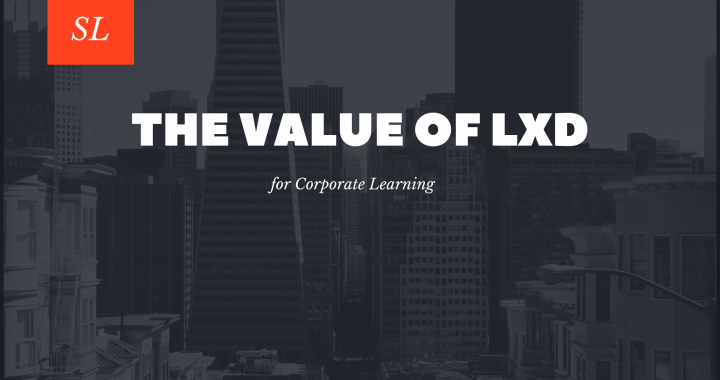As recent as three years ago there has been great impetus in the discussion of Learning Experience Design (LXD). Many recognized personalities in the L&D industry have written about it and as it can always be expected, capitalized on its commercialization. In this triumphant return of the StyleLearn blog we take a look at LXD from the business learning perspective and its value for improving workplace performance.
What is LXD?
The definition of LXD is a quagmire of varying interpretations. No surprises there as the same problem occurred with Instructional Design (ID) which now seems to be confused with content development. Is it learner-centered curricular design? What about the combination of User eXperience (UX) and Instructional Design (ID) principles? Is it a design movement originated in the Netherlands? Is it pedagogy concerned with the well being of the student? Sure! It’s all these things. The important thing to know is that no one has defined it for corporate learning aside from mentioning all that is ID under the new LXD label. For all else, you can check this article on LinkedIn discussing its origins. However, depending on how you interpret LXD, you may find sources dating back to the early 1900s. As we move along here, we’ll define LXD as the intentional approach to facilitate optimal learning conditions in a human-centered way.
LXD and Corporate Learning
Corporate learning has the ultimate responsibility to facilitate the conditions and resources for thriving performance. A corporate learning function that solely focuses on reducing learning experiences to courses and topic libraries is just an academic environment in disguise. Therefore, LXD in corporate settings has to not only address the needs of the learner, but also the needs of the business. Why is this? Because many will make the argument that if you take care of the employee, then the business needs are met. Unfortunately, this does not make too much sense because everyone is different and there are too many variables to cover. This same condition makes it very difficult to substantiate whether LXD can make an impact on business performance. So, an LX designer cannot simply get “tunnel vision” and get attached to the human-centered idea without also tending to the business goal. Just remember, LXD is schools is ideal, because professors are not responsible for the performance of students beyond their graduation. Workplace learning professionals don’t have this luxury. Corporate learning professionals practicing LXD in work environments need to focus on addressing the learner experience as well as the business tasks each learner is expected to perform well; in the end, the worker and L&D will be there when the outcomes are observed.
LXD for the Future
The future of LXD will be an interesting one. It may also be no future at all. Currently, ID seems to be the most popular field for job searches due to the desperate need many organizations have to digitize their learning programs. Whatever happens, we need to keep working towards reducing the academic-like approaches in corporate settings to create learning experiences that truly focus on business problems, not just people’s perceptions of a problem. The ideal LXD will not just facilitate performance workflows for employees, but challenge the business to improve its practices.

